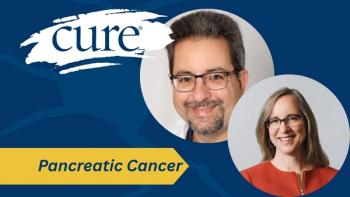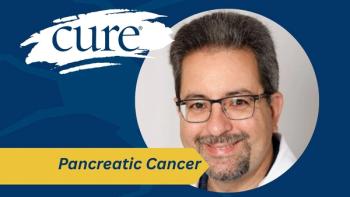
Patient-Physician Discordance Shows Need for Better Communication on End-of-Life Care
At the end of life, patients and physicians both have their own goals when it comes to care and treatment; however, researchers from Case Western Reserve University and Flatiron Health have found that those goals are sometimes at odds with one another.
At the end of life, patients and physicians both have their own goals when it comes to care and treatment; however, researchers from Case Western Reserve University and Flatiron Health have found that those goals are sometimes at odds with one another.
In a study presented at the American Society for Clinical Oncology (ASCO) Annual Meeting, Sara Douglas, Ph.D., RN, and her colleagues evaluated the discordance between the goals of both patients and physicians, and how it can negatively impact quality end-of-life care.
The idea for this study was born from the researchers’ initial work examining physician and patient goals of care at end of life in the intensive care unit (ICU). “We found that there was a fair amount of disconnect between what the physicians’ goals were and the families’ goals were,” Douglas, who was lead author on the study, said in an interview with CURE.
However, she added that their initial research was missing the patient voice. “Because the patients couldn’t speak for themselves, we had their surrogate decision makers — which was usually a family member – determine what they thought the patient wanted,” Douglas added. “We didn’t know, really, what the patient was thinking.”
So, Douglas and colleagues took this basic framework and applied it to a situation where they had the greatest opportunity to understand both the patient and physician point of view consistently over time.
In a longitudinal design study that ran from January 2015 to July 2017, 378 patients with stage 4 gastrointestinal (66 percent) or lung (34 percent) cancers and their oncologists were surveyed at enrollment and again every three months for the next 15 months, or until the patient died.
Using a visual analog scale where one end indicated survival and length of life as most important (100 points) and the opposite end indicated that quality of life and comfort were most important (0 points), participants were asked to move a toggle along the continuum to represent their goals at each specific point in time. Discordance between patient and physician scores was defined as an absolute difference of more than 40.
Neither group could see the other’s responses, but Douglas noted the disparities were striking. “We had some scores where the difference was 92 points — one response was 100 and the other was 8. We had a lot of variability in terms of physician and patient responses,” she added.
In total, 168 patients (44 percent) died after an average of 6.5 months after enrollment; however, their results were still presented. At the last assessment prior to death, 32 percent of the patients and their physicians reported having discordant goals. Of these cases, 60 percent of patients had more survival-focused goals compared with 40 percent of doctors. Lastly, 77 percent of pairs with discord at enrollment still had discord at the last assessment before death.
When the physicians were asked what they believed patients’ goals of care were, there was only a 27 percent discord in what the patients’ actual goals were. “Physicians, when asked what their understanding is of what the patient wants, assume it’s the same thing the physicians want themselves,” Douglas said. “This is called false consensus bias, (meaning) I assume you agree with me unless there’s evidence to the contrary.”
Douglas did note that extreme discordance was not the norm. “If you think about it, 27 percent of the dyads were in sharp disagreement, but that means that 73 percent were in agreement to some degree,” she added.
Douglas acknowledged that these findings highlight the need for patients and their physicians to have clear discussions and come to a better understanding, so that patients will receive end-of-life care that is consistent with what they want. But if communication is key, where should it start?
Research has shown that patients often expect physicians to bring up these topics. But due to many factors, including the physician’s comfort levels when dealing with these topics, these discussions may not take place. So, Douglas and her team have begun a new study where they share the information and record the discussion to better understand why each party feels the way they do, and then see if either patient or physician changes their goals.
Ideally, they hope to create a model that empowers patients to take a more involved role in starting these discussions. “If patients can at least have access to […] what their physicians are thinking and why, they can at least make an informed decision,” Douglas said.
“That decision may be that they choose to disregard that information, but at least they’re making an informed decision.”





